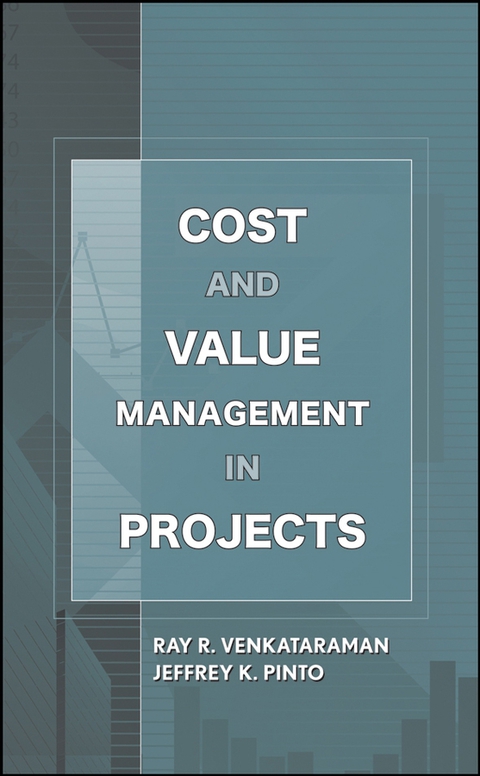Description
Efnisyfirlit
- Cover
- Contents
- Title Page
- Copyright
- Chapter 1: Introduction to the Challenge of Cost and Value Management in Projects
- 1.1 Importance of Cost and Value Management in Projects
- 1.2 Keys to Effective Project Cost Management
- 1.3 Essential Features of Project Value Management
- 1.4 Organization of the Book
- References
- Chapter 2: Project Needs Assessment, Concept Development, and Planning
- 2.1 Needs Identification
- 2.2 Conceptual Development
- 2.3 The Statement of Work
- 2.4 Project Planning
- 2.5 Project Scope Definition
- 2.6 Work Breakdown Structure
- References
- Chapter 3: Cost Estimation
- 3.1 Importance of Cost Estimation
- 3.2 Problems of Cost Estimation
- 3.3 Sources and Categories of Project Costs
- 3.4 Cost Estimating Methods
- 3.5 Cost Estimation Process
- 3.6 Allowances for Contingencies in Cost Estimation
- 3.7 The Use of Learning Curves in Cost Estimation
- References
- Appendix to Chapter 3
- 3A.1 Categories of Forecasting in Project Management
- 3A.2 Forecasting Methods for Projects
- 3A.3 Time Series Analysis
- 3A.4 Linear Regression Analysis
- 3A.5 S-curve Forecasting
- Solutions
- References
- Chapter 4: Project Budgeting
- 4.1 Issues in Project Budgeting
- 4.2 Developing a Project Budget
- 4.3 Approaches to Developing a Project Budget
- 4.4 Activity-based Costing
- 4.5 Program Budgeting
- 4.6 Developing a Project Contingency Budget
- 4.7 Issues in Budget Development
- 4.8 Crashing the Project: Budget Effects
- References
- Chapter 5: Project Cost Control
- 5.1 Overview of the Project Evaluation and Control System
- 5.2 Integrating Cost and Time in Monitoring Project Performance: The S-Curve
- 5.3 Earned Value Management
- 5.4 Earned Value Management Model
- 5.5 Fundamentals of Earned Value
- 5.6 EVM Terminology
- 5.7 Relevancy of Earned Value Management
- 5.8 Conducting an Earned Value Analysis
- 5.9 Performing an Earned Value Assessment
- 5.10 Managing a Portfolio of Projects with Earned Value Management
- 5.11 Important Issues in the Effective Use of Earned Value Management
- References
- Chapter 6: Cash Flow Management
- 6.1 The Concept of Cash Flow
- 6.2 Cash Flow and the Worth of Projects
- 6.3 Payment Arrangements
- References
- Chapter 7: Financial Management in Projects
- 7.1 Financing of Projects Versus Project Finance
- 7.2 Principles of Financing Projects
- 7.3 Types and Sources of Finance
- 7.4 Sources of Finance
- 7.5 Cost of Financing
- 7.6 Project Finance
- 7.7 The Process of Project Financial Management
- References
- Chapter 8: Value Management
- 8.1 Concept of Value
- 8.2 Dimensions and Measures of Value
- 8.3 Overview of Value Management
- 8.4 Value Management Terms
- 8.5 Need for Value Management in Projects
- 8.6 The Value Management Approach
- 8.7 The VM Process
- 8.8 Benefits of Value Management
- 8.9 Other VM Requirements
- 8.10 Value Management Reviews
- 8.11 Relationship Between Project Value and Risk
- 8.12 Value Management as an AID to Risk Assessment
- 8.13 An Example of How VM and Risk Management Interrelate
- References
- Chapter 9: Change Control and Configuration Management
- 9.1 Causes of Changes
- 9.2 Influence of Changes
- 9.3 Configuration Management
- 9.4 Configuration Management Standards
- 9.5 The CM Process
- 9.6 Control of Changes
- 9.7 Change Control Procedure and Configuration Control
- 9.8 Responsibility for the Control of Changes
- 9.9 Crisis Management
- 9.10 An Example of Configuration Management
- References
- Chapter 10: Supply Chain Management
- 10.1 What Is Supply Chain Management?
- 10.2 The Need to Manage Supply Chains
- 10.3 SCM Benefits
- 10.4 Critical Areas of SCM
- 10.5 SCM Issues in Project Management
- 10.6 Value Drivers in Project Supply Chain Management
- 10.7 Optimizing Value in Project Supply Chains
- 10.8 Project Supply Chain Process Framework
- 10.9 Integrating the Supply Chain
- 10.10 Performance Metrics in Project Supply Chain Management
- 10.11 Project Supply Chain Metrics and the Supply Chain Operations Reference (SCOR) Model
- 10.12 Future Issues in Project Supply Chain Management
- References
- Chapter 11: Quality Management in Projects
- 11.1 Definition of Quality in Projects
- 11.2 Elements of Project Quality
- 11.3 Total Quality Management (TQM) in Projects
- 11.4 Quality Management Methods for a Project Organization
- 11.5 Quality Standards for Projects
- References
- Chapter 12: Integrating Cost and Value in Projects
- 12.1 The Project Value Chain
- 12.2 Project Value Chain Analysis
- 12.3 Sources and Strategies for Integrating Cost and Value in Projects
- 12.4 Integrated Value and Risk Management
- 12.5 The Project Cost and Value Integration Process
- References
- Index
- Wiley End User License Agreement






Reviews
There are no reviews yet.